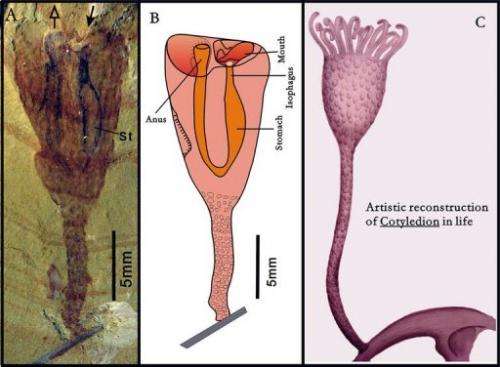Ancient critter could be the granddaddy of shellfish

A weird marine creature that lived 500 million years ago at a time of explosive growth in Earth's biodiversity could be a forerunner of worms and molluscs, a study published on Thursday said.
Palaeontologists in China and Europe have taken a second look at fossils of a species called Cotyledion tylodes—a small animal that, when it was identified in 1999, was at first thought to be a cnidarian, or part of a group of jellyfish-like species.
C. tylodes had a goblet-shaped body between eight and 56 millimetres (0.3 to 2.2 inches) long, with a cup-shaped upper part and lower cylindrical stalk.
On the upper part, the creature's mouth lay adjacent to its anus, with the two organs connected by a U-shaped gut and encircled by a "crown" of foldable tentacles, the scientists found.
The peculiar anatomy means that C. tylodes is most probably an entoproct, meaning an organism that strains sea water to filter out suspended food particles.
If so, its place in the family tree is wrong, says the study. It is likely to be a primitive lophotrochozoan, a branch that today includes worms and shellfish.
The study appears in the journal Nature Scientific Reports.
Journal information: Scientific Reports
(c) 2013 AFP





















